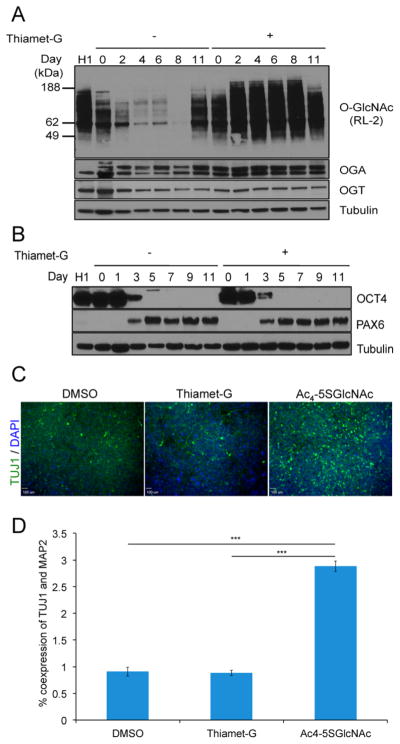Figure 4.
Thiamet-G increases global O-GlcNAcylation in differentiating hESCs but does not affect differentiation kinetics. (A) Western blot shows that O-GlcNAc levels increase with Thiamet-G treatment from day –2 to 11. (B) Western blot shows that treatment with Thiamet-G does not affect differentiation kinetics since no difference in OCT4 and PAX6 protein expression was observed in Thiamet-G-treated cells in comparison to DMSO-treated cells. (C) Immunofluorescence analysis of TUJ1 expression levels in differentiated hESCs treated with DMSO, Thiamet-G, or Ac4-5SGlcNAc from day –2 to 11. Thiamet-G treatment does not recapitulate the neuronal phenotype obtained in Ac4-5SGlcNAc-treated hESCs. (D) Percent coexpression of TUJ1 and MAP2 in cells treated with DMSO, Thiamet-G, or Ac4-5SGlcNAc for the entire duration of neural differentiation, as determined by flow cytometry analysis, confirms the results obtained by immunofluorescence (n = 6; mean ± SEM; ***P < 0.001).

